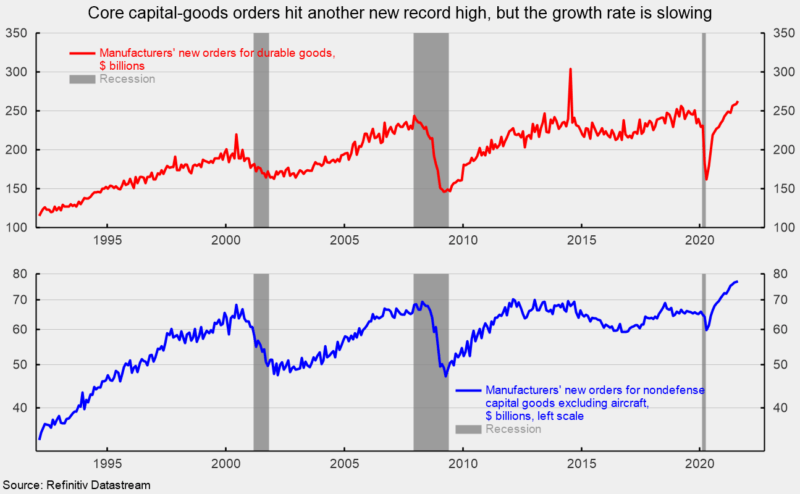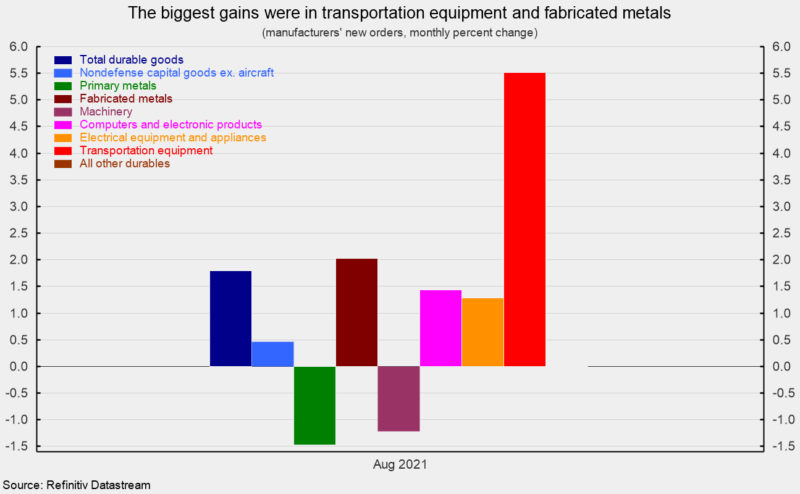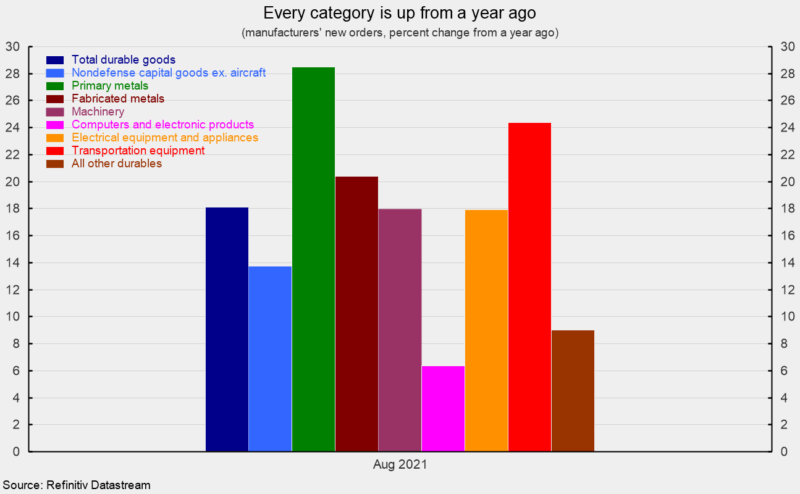Durable-Goods Orders Rose in August as Core Capital-Goods Hit Another Record High
New orders for durable goods rose again in August, gaining 1.8 percent, the 15th rise in the last 16 months. Total durable-goods orders are up 16.9 percent from a year ago. The August gain puts the level of total durable-goods orders at $263.5 billion, the second-highest level on record (see top of first chart).
New orders for nondefense capital goods excluding aircraft or core capital goods, a proxy for business equipment investment, rose 0.5 percent in August after gaining 0.3 percent in July and 1.0 percent in June, putting the level at $77.1 billion, another record high and the ninth new high in the last ten months. Core capital-goods orders had broken the $70 billion mark only once before, in February 2012, but have been above $70 billion for ten consecutive months (see bottom of first chart).
Gains among the categories in the report were generally broad-based with four of the seven categories shown posting gains. Among the individual categories, primary metals fell 1.5 percent, fabricated metal products gained 2.0 percent, machinery orders decreased by 1.2 percent, computers and electronic products rose 1.4 percent, electrical equipment and appliances were up 1.3 percent, transportation equipment jumped 5.5 percent, and the catch-all “other durables” category was roughly unchanged (see second chart). Within the transportation equipment category, motor vehicles and parts sank 3.1 percent while nondefense aircraft surged 77.9 percent, but defense aircraft decreased 17.8 percent. From a year ago, every category shows a gain (see third chart).
Durable-goods orders continue to be strong, particularly the core-capital goods components. Demand remains strong for the manufacturing sector, and the tight labor market creates incentives to substitute capital for labor. The pandemic may be accelerating structural changes to the economy, affecting labor, housing, manufacturing, and services, especially health care, travel and leisure, food services, and retail. While the recent resurgence in Covid creates uncertainty, the outlook is for continued growth but with upward pressure on prices as demand outpaces supply. As labor, materials, and logistical issues are alleviated, price pressures are likely to ease, but the process may take a significant period of time.








